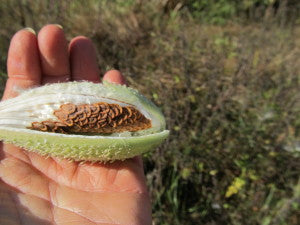 To help raise awareness about declining monarch butterfly populations and reverse the impact created by monarch habitat loss, we worked with artist Nancy Blum to create two Art Packs for the genus Asclepius: Milkweed (Asclepias syriaca) and Butterfly Weed (Asclepias tuberosa).
To help raise awareness about declining monarch butterfly populations and reverse the impact created by monarch habitat loss, we worked with artist Nancy Blum to create two Art Packs for the genus Asclepius: Milkweed (Asclepias syriaca) and Butterfly Weed (Asclepias tuberosa).
While modern agriculture and industry are, in large part, responsible for monarch habitat loss, simply having a garden or lawn which is mowed down, tidy, and weed-free, can have an outsized negative impact. To help monarch butterflies and other threatened pollinators, we need to allow more weediness and wildness back into our gardens.
 Monarch butterflies lay their eggs exclusively on members of the Asclepias genus. These plants serve as the sole source of food for the larvae. The bitterness of milkweed is from the glycosides present in the milky latex, which are the compounds that make monarch butterflies and larvae toxic to predators. (These compounds are toxic to humans too, so please don't munch them or rub the sap into your eyes.)
Monarch butterflies lay their eggs exclusively on members of the Asclepias genus. These plants serve as the sole source of food for the larvae. The bitterness of milkweed is from the glycosides present in the milky latex, which are the compounds that make monarch butterflies and larvae toxic to predators. (These compounds are toxic to humans too, so please don't munch them or rub the sap into your eyes.)
When someone says "milkweed" most people will picture Common Milkweed (pictured, at various stages of growth). Common Milkweed is native to the Eastern US, and is the best milkweed to plant in the eastern states. But orange Butterfly Weed is also in the Asclepius genus and shares the same growing instructions.
Butterfly Weed blooms for longer than Common Milkweed, which allows monarchs to benefit from its nectar after emerging from the chrysalis stage. For happy, healthy butterflies consider growing both!

As you might notice, the seeds from the milkweed flower disperse in the fall. Attached to pappi, the silky threads that catch the wind, they disperse from the pods and travel in the wind before landing on the ground. The winter temperatures, snow, and freeze-thaw cycle "plant" the milkweed, and break the seed down enough to allow it to germinate in the spring.
 When starting seed from a native plant purposefully, it's always a good idea to mimic how it would germinate in its native habitat.
When starting seed from a native plant purposefully, it's always a good idea to mimic how it would germinate in its native habitat.
There are 2 methods, each can be done in the the fall or in the spring.
 Method 1: Fall-sowing in containers
Method 1: Fall-sowing in containers
Pros: By keeping the milkweed contained, the milkweed seedlings are able to grow big and healthy before transplanting. In order to get well established and come back year after year, the plant should grow to about 24" high, allowing it to form a healthy rhizome, which it needs to overwinter. (If the leaves get munched off by caterpillars while still small, the plant won't be able to establish a healthy root system and might not survive the winter.)
Cons: The added time in caring for plants in containers, plus the transplanting time in the early summer.
How to start: Fill 4-6" plastic pots with a well-drained potting mix. Sow 5-10 seeds per pot, spacing them evenly, about 1/4 inch deep. Press in, and water well. Place the pots outdoors, on a porch or at the side of a house is ideal, and leave them there to weather the winter. In the spring, as the temperatures warm, the pots should be moved into full sun to a protected spot and allowed to germinate.
Method 2: In Fall--Direct sowing into a prepared garden plot
Pros: The ease of this method is the most attractive! It is also the most similar to how milkweed is propagated in its natural habitat.
Cons: To execute this method, you will need to plan out the location of your patch in the fall, when most garden chores have ended. The seedlings will also be susceptible to pests and perhaps even hungry caterpillars, which can keep them from establishing themselves to survive over the winter.
Method 3: In Spring--Sowing in containers
This method is almost identical to method 1, except you will need to vernalize the seeds. Eight weeks prior to your last spring frost, start seeds in pots as directed. Water them in well, then, cover with plastic wrap and place in a refrigerator for 2-4 weeks. Then, proceed as above. (You can also start the seeds in cell trays, but this method in larger posts is preferable because the root systems have the room to develop.)
Method 4: In Spring--Direct sowing into prepared garden plot
This method is almost identical to Method 2, except you will sow the seeds in early spring, when night time temperatures are still in the 30s. The seeds can be sown later, though you might see decreased germination as the weather warms.
For more information about which varieties of milkweed are best for your region, consult these regional guides provided by Xerces.org.
For full-sized renditions of Nancy Blum's art, see: Milkweed Fine Art Poster and Butterfly Weed Fine Art Print.





